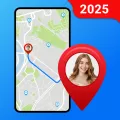Apps Home

Understanding the Integration of Smartphone Technology with Automobiles
As technology continues to advance at a rapid pace, the integration of smartphones with vehicles has become one of the most significant trends of the modern automotive industry. By employing sophisticated software and innovative hardware interfaces, drivers can now achieve full control of their cars through their smartphones. This capability fundamentally transforms the driving experience by making it smarter and more convenient. The seamless integration of smartphone applications allows users to execute a wide range of functions remotely, such as locking and unlocking doors, starting the engine, and even adjusting climate controls, which adds a new layer of convenience and efficiency to car ownership. Through the utilization of BLE (Bluetooth Low Energy) and Wi-Fi, these applications can communicate securely and instantaneously with vehicle systems. A key technical aspect in this integration is the use of APIs (Application Programming Interfaces) which facilitate the communication between the car's onboard computer and the smartphone application. By creating a middleware that translates user inputs into actionable commands, developers can ensure that these applications work reliably regardless of vehicle make or model. For example, during cold weather, a driver could remotely initiate the engine and heating system to ensure the cabin reaches a comfortable temperature before getting in. Similarly, with location-tracking services, the application could send real-time updates about the vehicle's location, enhancing the overall security and providing peace of mind to the owner. Understanding these technological principles and applications reveals how intricately smartphones can be interwoven into the fundamental operations of modern vehicles, making it possible for users to literally have control of their car in the palm of their hand.
Exploring the Practical Benefits in Everyday Scenarios
Incorporating smartphone control into car operation presents numerous tangible benefits that enhance not just the convenience, but also the safety and security of daily driving. One of the primary advantages is the reduction of dependency on car keys. This is particularly beneficial in situations where traditional keys can be misplaced or forgotten. Instead, drivers can utilize their smartphones to open or start their vehicles, streamlining access to their vehicle in unexpected situations. Furthermore, smartphone integration enables easy sharing of vehicle access with family members or friends, without the need for physically handing over a key. Through a secure application, a driver could authorize another person to access the vehicle for a defined amount of time, such as when lending a car to someone or when sharing vehicles among family members. Another practical scenario is navigating crowded urban environments. By utilizing real-time traffic data and navigation services integrated into the smartphone app, drivers can receive alternative route recommendations that can help avoid congested traffic, saving both time and fuel. These applications often include telematic data that assess driving habits and can upload information about the car's status, such as oil life and tire pressure, alerting the owner about future service requirements or when immediate action is needed. Such detailed diagnostics and navigation aids can tremendously simplify vehicle maintenance, reducing the likelihood of breakdowns and increasing the vehicle's longevity. Clearly, when these technologies are judiciously applied, they hold the potential to revolutionize the way people interact with their vehicles, enhancing the overall driving ecology.
Examining Security Concerns and Countermeasures
While the ability to control your car via a smartphone offers a plethora of conveniences, it also introduces a new set of security challenges. Security and privacy remain paramount, as the risks of cyber intrusions increase with higher connectivity. Hackers could potentially exploit vulnerabilities within the application or the vehicle's onboard systems to gain unauthorized access. Therefore, robust security protocols are essential to protect both the vehicle and its user. This begins with end-to-end encryption of data transmitted between the smartphone and the car. Encryption ensures that any intercepted information remains unintelligible and unusable by unauthorized entities. Regular software updates play a critical role in addressing vulnerabilities as they are discovered, ensuring that both the app and the vehicle's control unit are fortified against evolving threats. Two-factor authentication is another security measure that can enhance protection by requiring a second form of verification before allowing access to the vehicle. Moreover, user awareness is crucial; drivers should be educated on the importance of securing their smartphone and taught best practices, such as using strong, unique passwords and installing trustworthy applications only from reputable sources, like the official app stores. By implementing these robust security protocols and user-awareness strategies, automakers and developers can mitigate risks, ensuring that the benefits of smartphone-car integration are realized without compromising user safety and data integrity.
Technical Innovations Driving the Future of Smart Driving
The landscape of smart driving is continuously evolving, spurred by relentless technical innovations that aim to further enhance the integration of smartphones with automobiles. One of the most significant developments in this arena is the advent of predictive technology powered by artificial intelligence and machine learning. Such technologies anticipate driver behavior and preferences, seamlessly adjusting climate settings, navigation routes, and media preferences without needing explicit input each time. Additionally, the incorporation of vehicle-to-everything (V2X) communication technology allows for real-time interaction between the vehicle and its surrounding environment, improving traffic management and reducing the likelihood of accidents by preemptively warning drivers about potential hazards. Another key innovation is the progress in autonomous driving functionalities. By synchronizing with the smartphone, cars can offer advanced driver-assistance systems (ADAS) that handle most aspects of driving under certain conditions, like managing speed and lane discipline. For instance, if a driver is running late for an appointment, the system could autonomously navigate through optimal routes, lessening the cognitive load on the driver. Additionally, advancements in augmented reality (AR) will transform head-up displays to project crucial driving information onto the windshield, supported by live data feeds from smartphone apps. This kind of integration nurtures an ecosystem where connectivity, automation, and user engagement are tailored to create a holistic and intelligent driving experience. As these innovations continue to unfold, the paradigm of smart driving is set to reach unprecedented heights, reshaping the future of automotive technology and its interaction with daily life.
Options for Integration Across Different Platforms
With the increasing demand for integrated smart driving solutions, there is also a significant focus on ensuring that these innovations are accessible across various platforms, catering to users with different operating systems like Android, iOS, Windows, Linux, and Mac. The versatility in access is crucial for maximizing usability and ensuring that technological adoption is as seamless as possible. Download for Android offers users a robust interface that supports a wide range of functionalities, providing reliable connectivity and control directly from the smartphone interface. Although not mentioned, developers often cater to iOS users with equal proficiency, ensuring that functionalities such as Siri integration for voice commands are optimized, while iPhone apps typically allow encrypted and swift connections to the vehicle. For users who prefer desktop interfaces, solutions are often developed to support Windows, Linux, and Mac systems, making it feasible for individuals to access vehicle information and control functionalities directly from their desktops or laptops. This cross-platform accessibility opens doors for integrating smart home infrastructures with automotive systems, widening the scope of convenience and user experience. By ensuring compatibility with various devices and operating systems, technology companies are paving the way for universal access, bringing forth a new era where accessibility, functionality, and innovation converge to make driving a smarter and more interconnected experience than ever before.
Share Your Opinion
Your Email Will Not Be Published.
All Rights Reserved © Apps Home 2025
































Renz Barizo
Nice game. Great graphics. Everything is well detailed. Will never gonna let you bored. But can you please have subtitles every time there is a cut...
cidrell gaming
*Chef's kiss*—this game is a masterpiece. Note to the developers: The game would benefit from having more NPCs (or bots) for both the Russians and ...
X.
Good ;) but need some improvennts like: inventory(you have 2 or 3 weapons not just 1) medikt to heal-playing with friends will be great , add more ...
elijah
This game is really great. The motion blur makes its feel more immersive and detailed. This is a big step up than the previous game! Also could you...
Sam Spade
The aiming of the gun needs to be improved somehow. You can't get it to steady. And the icon buttons are too close to each other and sometimes the ...